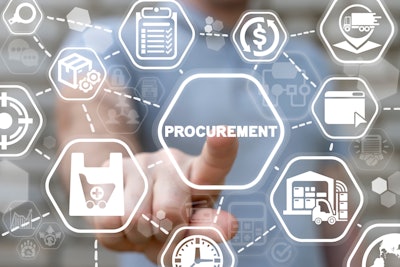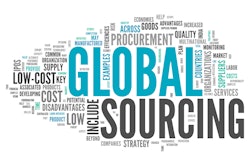
Supply chain has certainly had its moment in the sun. Two years ago, consumers were not as well versed on the delicate inner workings of inventories, raw consumer costs or shipping as they are today. The unwavering news of supply chain disruptions and bottlenecks, including the time everyone collectively rooted for a container ship stuck in the Suez Canal, readily educated consumers on just how intertwined the supply chain is with everyday life.
It was a shock to some consumers, when earlier this year large retailers announced oversupply issues. Though consumers rejoiced in the news that some of their favorite stores would soon be rolling out sales, those who work directly with the supply chain and the economy could recognize the considerable loss those companies were experiencing.
Retailers and manufacturers over-ordered and over-produced because they were not monitoring the economic indicators that showed supply chain constraints and labor shortages were easing.
The oversupply issue was largely caused by a lack of real-time data in planning and forecasting processes leading business leaders to make a costly overcorrection.
In a recent Accenture report, 99% of the 450 CFOs surveyed reported that they need real-time data to make better decisions, but only 16% of those surveyed said they have real-time data available today.
With current economic uncertainty riddling consumer sentiment, an ongoing negative geopolitical climate and a continuing health crisis, business professionals are asking themselves what can we do in response to current economic conditions to navigate upcoming volatility?
Create contingency plan
One of the most important things supply chain professionals can do to support planning and forecasting is to monitor external economic indicators that can directly affect their business performance. There are a multitude of indicators, such as gas and oil prices, weather, raw material costs and industrial production, that can drastically change when, how and where product meets the consumer.
Due to the years of uncertainty and disruption, customer-centric management is an emerging trend in supply chain planning and forecasting. This means many organizations are looking more at their customer data and overall consumer trends to make strategic business decisions. But with the lowest consumer sentiment in decades, it can be difficult for companies to know how consumer spending is going to change over the next few months, especially when the upcoming holiday season is taken into account.
This is where contingency planning comes into play. Now more than ever, supply chain professionals need to monitor external economic data, including consumer sentiment and spending, to better understand what possible economic scenarios could play out. With real-time data on hand, business leaders can use the projections to create best and worst possible outcomes and then plan and forecast within that range to help ensure business success.
Right now, business leaders are filled with “what-if'' questions. What if consumer spending follows consumer sentiment? What if oil and gas prices rise again? What if we have to lay people off to afford wages for our employees? By monitoring the specific economic indicators that affect their business, leaders can use the data to create agile contingency plans that allow for real-time updates based on how the economy changes.
Monitoring the data for proactive planning
Staying up to date on real-time economic data can be a heavy lift without the right technology. Artificial intelligence (AI) and machine learning make it easy for business leaders to not only track economic indicators, but also quantify impact and seize opportunities based on market change.
Not only can business leaders use this technology to navigate economic slowdown and volatility like we are currently experiencing, but during a stable market, leaders can get ahead of competitors by making constant improvements to their forecast and can drive overall better decision making and improve risk management.
AI and machine learning help business leaders become proactive decision makers instead of reactive. Even when unprecedented events come along and immediately change the economic outlook, say a global pandemic for example, business leaders that utilize external economic data can recover quickly and use their planning and forecasting technology to navigate the uncertainty until the time comes when they’re able to be proactive again.
Market volatility and economic uncertainty are guaranteed. As the economy ebbs and flows through various consumer trends and new business models so too will interest rates, disposable income, industrial production, and more. By utilizing external economic data as indicators for planning and forecasting, business leaders can navigate market changes and make more strategic business decisions using a mix of their company’s historic internal data and real-time economic data.
















![Pros To Know 2026 [color]](https://img.sdcexec.com/mindful/acbm/workspaces/default/uploads/2025/08/prostoknow-2026-color.mduFvhpgMk.png?ar=16%3A9&auto=format%2Ccompress&bg=fff&fill-color=fff&fit=fill&h=135&q=70&w=240)